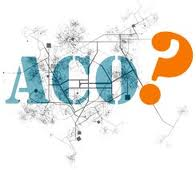New survey results highlight the disconnect between what patients want and what their physicians and hospitals can deliver. Data from the survey reveals that patients are interested in:
New survey results highlight the disconnect between what patients want and what their physicians and hospitals can deliver. Data from the survey reveals that patients are interested in:
- accessing their medical records online (75%)
- communicating with their primary care physician through email or the Internet (62%)
- going online to view their test results (76%)
- receiving appointment reminders via email (65%)
- receiving appointment reminders via text (40%)
- use mobile phones to access health information (17%) – nearly 90% of US adults own mobile phones
Unfortunately for these patients, only 40% of physicians have the ability to give patients access to their online health records or interact with patients through email. However, 70% of these physicians use electronic health record systems and 46% report that they have a system that provides patients with personalized information to help them manage and make decisions about their health.
It is important to include that older people want to use online tools to help manage their health and communicate with providers. Respondents 65+ only have numbers slightly lower than the general population, including:
- 60% are interested in getting email appointment reminders
- 57% are interest in online correspondence with physicians about their health
The young, minorities and Medicaid beneficiaries rely on mobile for their access to the Internet and want to communicate with health providers by text messaging. Data include:
- 57% of African Americans and 53% of Hispanics responded that they were interested in text appointment reminders compared with only 33% of whites.
- 58% of those covered by Medicaid are interested in text reminders, compared with 43% of those with employer-based medical insurance and 35% with individual coverage.
- The uninsured look to text and email communications, rather than online communications, traditional postal mail or phone.
We agree with the survey authors that the data suggests that the meaningful use criteria for stage 2 was set a bit too low and caution providers that in Stage 3, we can expect to see much higher percentages than requiring 50% at least of patients to have access to their health information and only 5% to use electronic communications.






